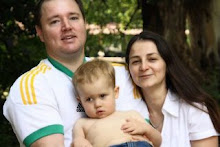Neuroblastoma
Definition: Neuroblastoma is a malignant (cancerous) tumor that develops from nerve tissue. It occurs in infants and children . It is rarely found in children older than 10 years. The cells of this cancer usually resemble very primitive developing nerve cells found in an embryo or fetus. (The term neuro indicates "nerves," while blastoma refers to a cancer that affects immature or developing cells).
Causes and risk factors: Neuroblastoma can occur in many areas of the body. It develops from the tissues that form the sympathetic nervous system (the part of the nervous system that controls body functions, such as heart rate and blood pressure, digestion, and levels of certain hormones).
The cause of the tumor is unknown. Neuroblastoma is by far the most common cancer in infants and the third most common type of cancer in children. There are approximately 650 new cases of neuroblastoma each year. This number has held steady for many years.
Boys are somewhat more likely to develop neuroblastomas than girls. For every 6 cases in male children, there are 5 in females.
The average age at the time of diagnosis is about 17 months. Around one-third of cases are diagnosed by the first year. Nearly 90% of cases are diagnosed by age 5. And about 2% of cases are found in people over the age of 10, including in some adults. In rare cases, neuroblastoma is detected by ultrasound even before birth.
Treatment varies depending on the location of the tumor, the extent of tumor spread and the age of the patient. In certain cases, surgery alone is enough, but often other therapies are needed. Anticancer medications (chemotherapy) may be recommended if the tumor is widespread. Radiation Therapy may also be used.
Complications
Spread of the tumorDamage and loss of function of involved organ(s): Kidney Failure Liver failure; Loss of blood cells produced by the bone marrow; Decreased resistance to infection; Other organ system failures
Expectations (prognosis)
The expected outcome varies. In very young children with neuroblastoma, the tumor may go away on its own, without any treatment, or the tissues of the tumor may mature and develop into a benign gangalioneuroma (a tumor of the peripheral nervous system) that can be surgically removed. In other cases, the tumor spreads rapidly.Response to treatment is variable. Treatment is often successful.
Information taken from:
http://www.nlm.nih.gov/medlineplus/ency/article/001408.htm; http://www.cancer.org/docroot/cri/content/cri_2_4_1x_what_are_the_key_statist...
There is a little information on the cancer.
Thanks to Bowman Family for letting us use the above information on our blog
Subscribe to:
Post Comments (Atom)




.jpg)






















No comments:
Post a Comment